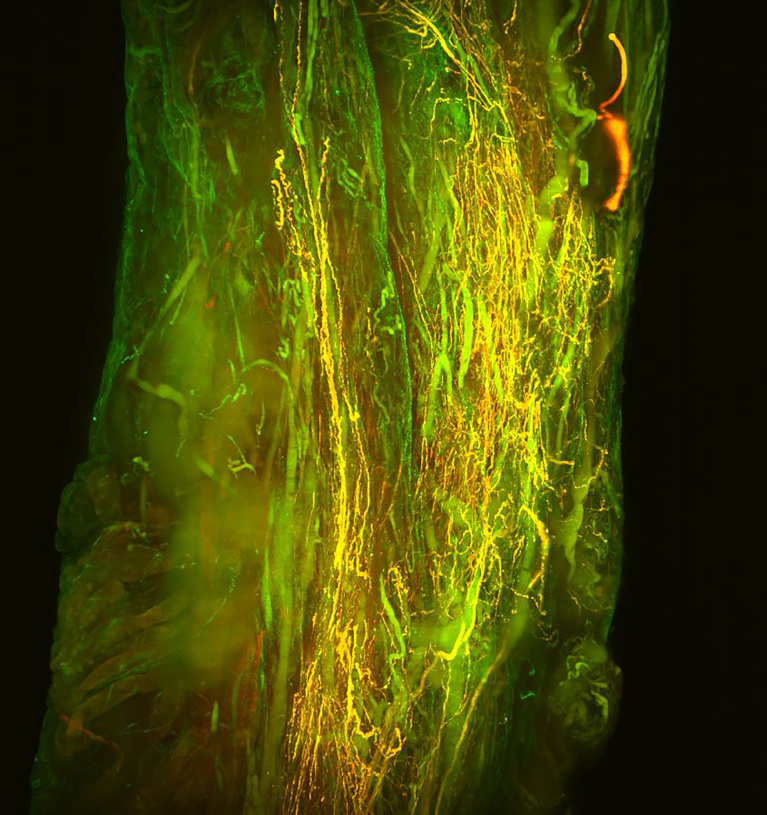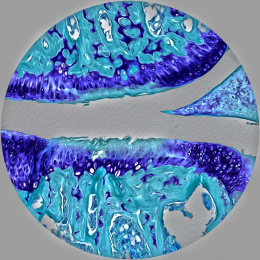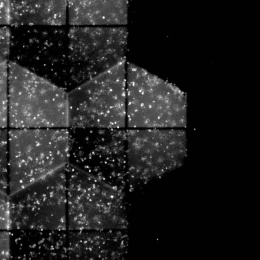Plasticity and Fate of Regenerating Peripheral Nerves 4
Plasticity and Fate of Regenerating Peripheral Nerves 4
Lillian Zhu, Shriya Srinivasan, Benjamin Johnston, Vlad Tereshenko, Joshua Bernstock, Sabrina Liu, Leah Prizant, Robert Langer
Koch Institute at MIT
These images depict thin, tortuous sensory nerves (red/orange) and blood vessels (green) re-growing into a free (denervated and devascularized) muscle graft in the rat, along with residual synaptic junctions (white) between nerve and muscle. Peripheral nerve plasticity—the ability of peripheral nerves to change their fundamental character—has been noted in many settings, including the expression of pain pathway-associated genes in nerves that ordinarily do not express them. Such flexibility has also been noted in the ability of efferent nerves to visceral smooth muscle targets being able to form neuromuscular junctions in skeletal muscle, offering the hope of preservation and eventual restoration of motor function after injury that damages the muscle’s original nerve.






